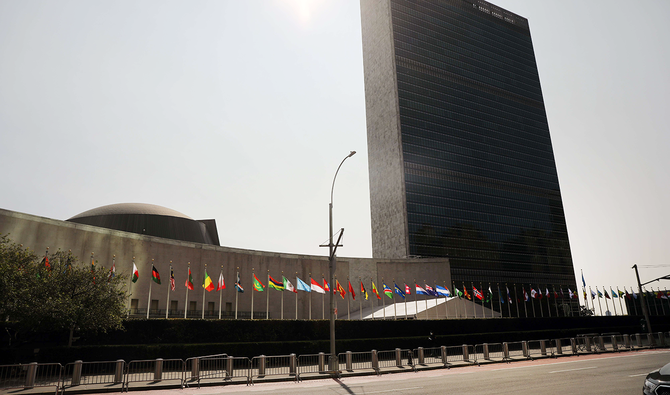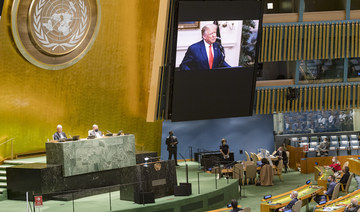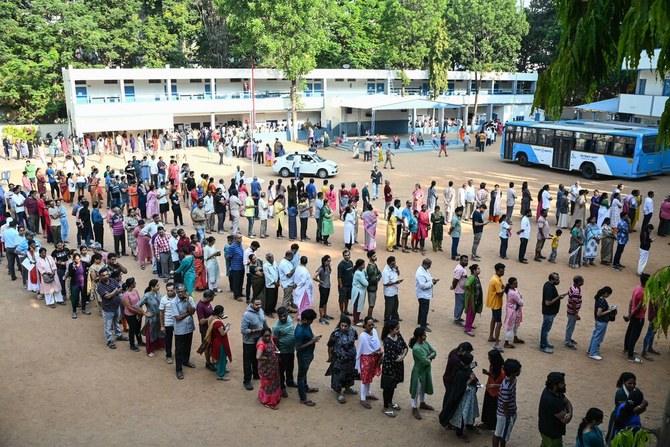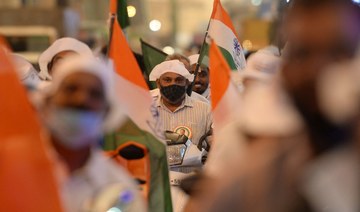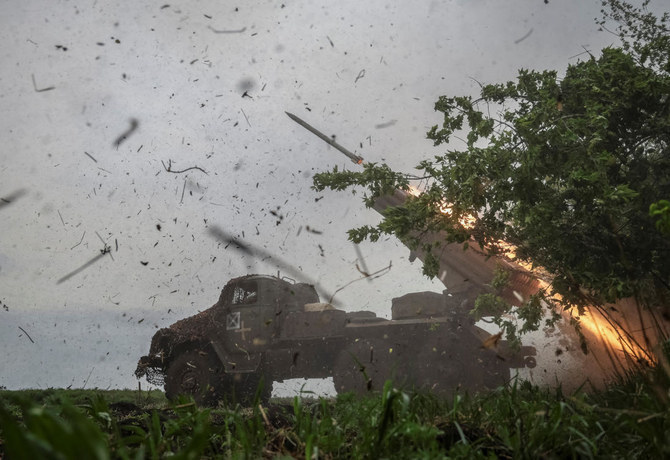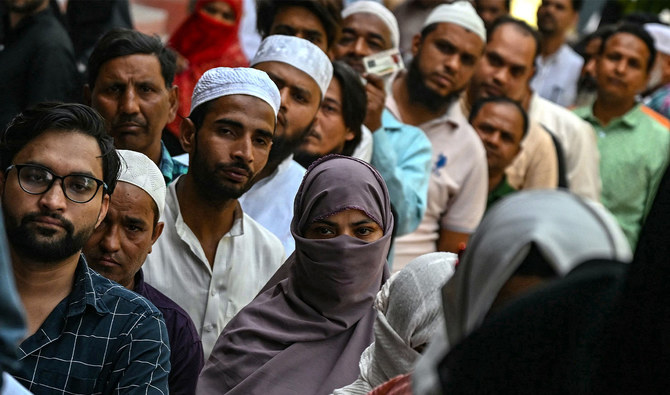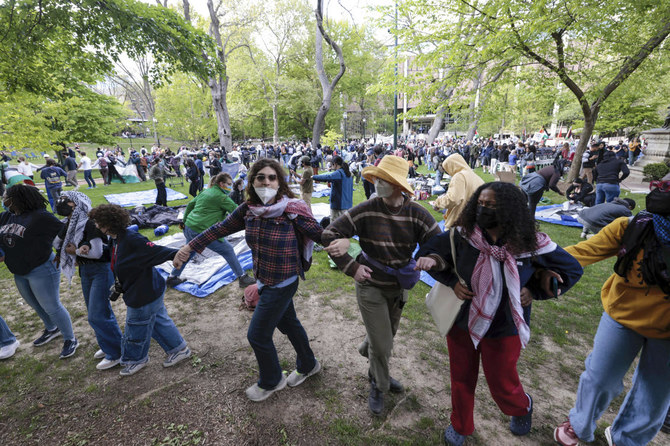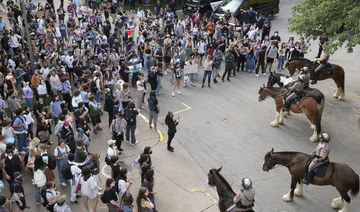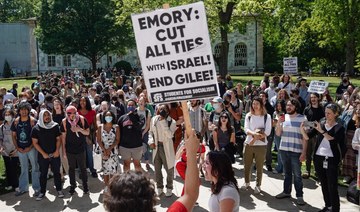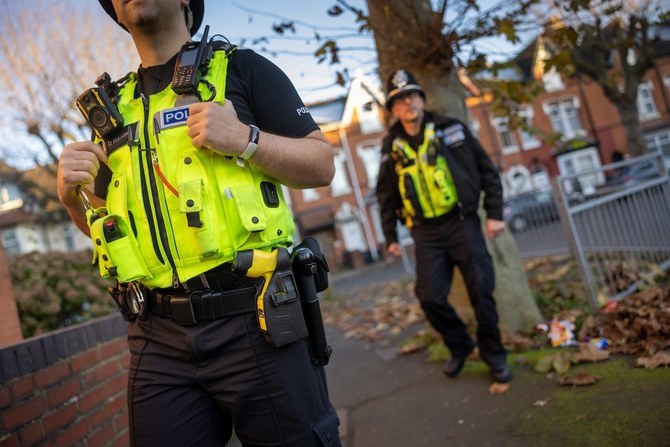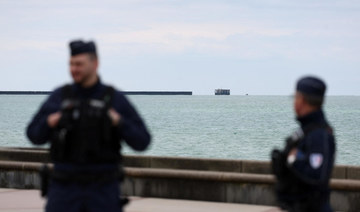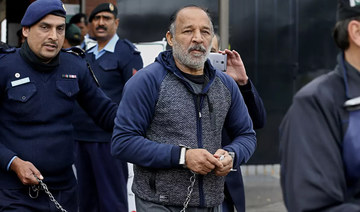NEW YORK: Even in a metropolis that draws over 62 million visitors each year, the UN General Assembly (UNGA) is usually one of the most publicized events in New York City. Not so much in 2020.
Outside the UN complex on First Avenue, curbside police barricades line the streets. But there is hardly anyone to see except a policeman, a photographer, and only a trickle of local residents going about their business as usual.
As the UN’s signature big meeting has moved online for the first time in its 75-year history, noticeably absent is the severe traffic congestion caused by police-escorted motorcades whizzing by as presidents, premiers, monarchs and other dignitaries swept across Midtown East for top-level, high-stakes meetings and conferences.
Extensive roadblocks had led the city to declare the second part of September “gridlock alert days.”
This year, no more than 200 New York-based diplomats will be allowed in the Midtown East headquarters, said Stephane Dujarric, spokesman for the UN secretary-general.
The UNGA is meeting by video because of coronavirus, compounding the pandemic’s blow to the city’s economy.
“Last year during the General Assembly we were at 100 percent occupancy, but since the pandemic everything has come down. We’re now at 20 percent,” Sylvia Natividad, who has been working at the Millennial Hilton across from the UN for the past 17 years, told Arab News.
This hotel is a leaders’ favorite, and Natividad has, along the years, met many heads of state. “It’s hard to be impressed by any of them. You want to impress me? Show me what you’re doing for your people,” she said.
Hotels usually reap about $20 million from UNGA attendees’ room rentals alone. But as she and I chatted, our voices echoed across the Hilton’s large, sumptuous but eerily empty lobby. Only one reporter came in, to ask for the key to the restrooms.
During the initial coronavirus outbreak, this Hilton offered essential workers over 17,000 free nights.
As the pandemic’s early epicenter in the US, New York saw a 90 percent decline in visitors, dealing a harsh blow to its multibillion-dollar tourism industry.
Last year, according to the city’s tourism agency NYC & Co., visitor spending supported more than 400,000 jobs and generated over $70 billion in economic activity.
The loss of the September swarm of visitors is now mostly felt in the city’s bottom line. Local businesses and their workers hurt the most as they see their income evaporate.
Across on 44th Street, Mona’s Kitchen restaurant owner Oliver recalled the “hustle and bustle” of last year, when on average over 18,000 attendees came through the doors of the UN headquarters daily.
“We had people from all over the world. Security was so tight it blocked off each end of the street. You couldn’t even get down the street without proper clearance and badges,” he told Arab News.
“This year it’s a ghost town. It’s been a ghost town since July. You barely get people walking on 2nd Avenue, so we don’t really get people down here.”
New York restaurants are already straining from a months-long ban on dining out, continuing limitations on table service, and worries about the city’s overall path to recovery.
Mona’s Kitchen made $20,000 per day just from breakfast and lunch this time last year, 50 percent more than on regular days.
“We’ll be lucky to do at least $1,000 today. I’m hoping to do a bit more but I don’t think we will,” Oliver said.
“The only reason we’re able to stay afloat and pay the two, three people I have right now is through the government Paycheck Protection Program. We got the Emergency Disaster Loan also. That allows us to pay rent and utilities,” he added.
“But in the next two, three months, if we don’t see a huge increase in sales and people coming back to the city, it’s going to force us to shut down. I can’t afford to pay rent after a couple of months.”
The UNGA has always coincided with the US Open tennis tournament and New York Fashion Week. For that, September has often brought windfall profits for New Yorkers.
It is a crucial month for the restaurants and bars that cater to world dignitaries, tennis fans and fashion partygoers.
Summer tends to be slow for the food industry, and business owners rely on events such as the UNGA to jumpstart autumn activity.
Beyond the diplomats and dignitaries, the UNGA also brings aides, civil society activists and everyday citizens to New York, showcasing the city to the world.
Now, its tourism sector faces a punishing autumn and winter season. As many as one-third of the city’s 230,000 small businesses will not be able to survive, the non-profit organization Partnership for New York City predicted in a July report.
Poverty and unemployment will rise as tens of billions of dollars are lost in revenue, and tourism will dry up.
Despite the economic devastation of the city, Max Riley, who has been living on 1st Avenue for 20 years, still believes that the UNGA is an “incredible experience every fall.”
Security checkpoints and protests are “a reality we just accept as part of living near the UN,” he told Arab News.
Residents of the east side of Manhattan have long complained about privileged diplomatic parking, illegal parking, traffic congestion and street closures resulting from UN sessions.
However, now the pin-drop silence “is just sad,” said Natividad. “But we’re hopeful everything will come back to normal.”
Riley said: “The entire city is empty. It’s not just this neighborhood. Nothing will change until we have a vaccine, then things will come back. It’ll take a little while. Probably in two or three years we’ll be tired of hearing the word ‘renaissance’.”
Still, despite projections of even deeper economic pain awaiting the city in the months to come, Councilwoman Farah Louis told Arab News: “The economic impact must be weighed against New York’s health and safety.”
Opening up the city would have meant letting a million “potential carriers” of COVID-19 into New York, she said.
“The relative loss of allowing coronavirus to ravage New York once again is much more detrimental to the economy than the relative and temporary tourism industry deficit,” she added.



